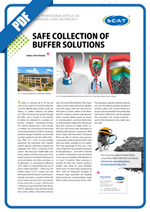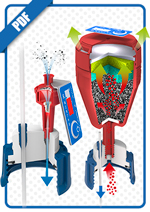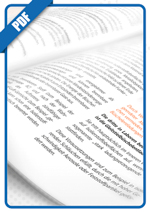 THE Original
THE Original
 Laboratory experience since 2000
Laboratory experience since 2000
 Made in Germany
Made in Germany
 The most complete System for Solvent Safety
The most complete System for Solvent Safety
 Directly from the Manufacturer
Directly from the Manufacturer
 Recommended by leading Pharmaceutical and
Recommended by leading Pharmaceutical and Chemical Companies




